Update from the field: Madagascar
Posted on: 8 October, 2025
As a conservation charity, we direct 20 field conservation projects with over 30 local partner organisations to conserve and protect some of the world’s most threatened species.
In Madagascar, we work with local communities and partners to monitor wildlife, as well as protect and restore habitats in Sahamalaza Iles Radama National Park, north-west Madagascar.
Paige Bwye, Lecturer in Conservation Science and Project Manager for the Society’s Northern Madagascar Conservation Programme, has just returned from a recent trip and shares some wonderful updates here.
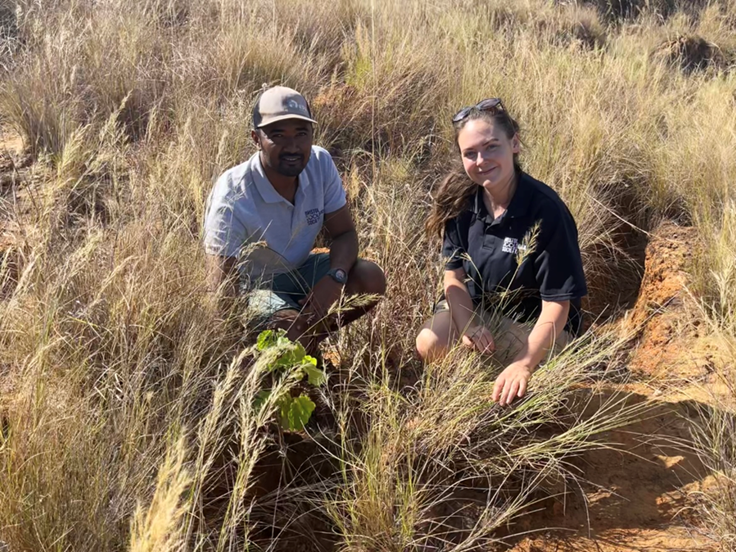 This summer, I visited Bristol Zoological Society’s (BZS) project site in Madagascar as part of our annual plan to provide project assurance and host in-person meetings with our team and partners, the Lemur Conservation Association (AEECL). Since I have taken on the role of Board Member at AEECL, this visit was my first opportunity to connect with the teams in this new capacity.
This summer, I visited Bristol Zoological Society’s (BZS) project site in Madagascar as part of our annual plan to provide project assurance and host in-person meetings with our team and partners, the Lemur Conservation Association (AEECL). Since I have taken on the role of Board Member at AEECL, this visit was my first opportunity to connect with the teams in this new capacity.
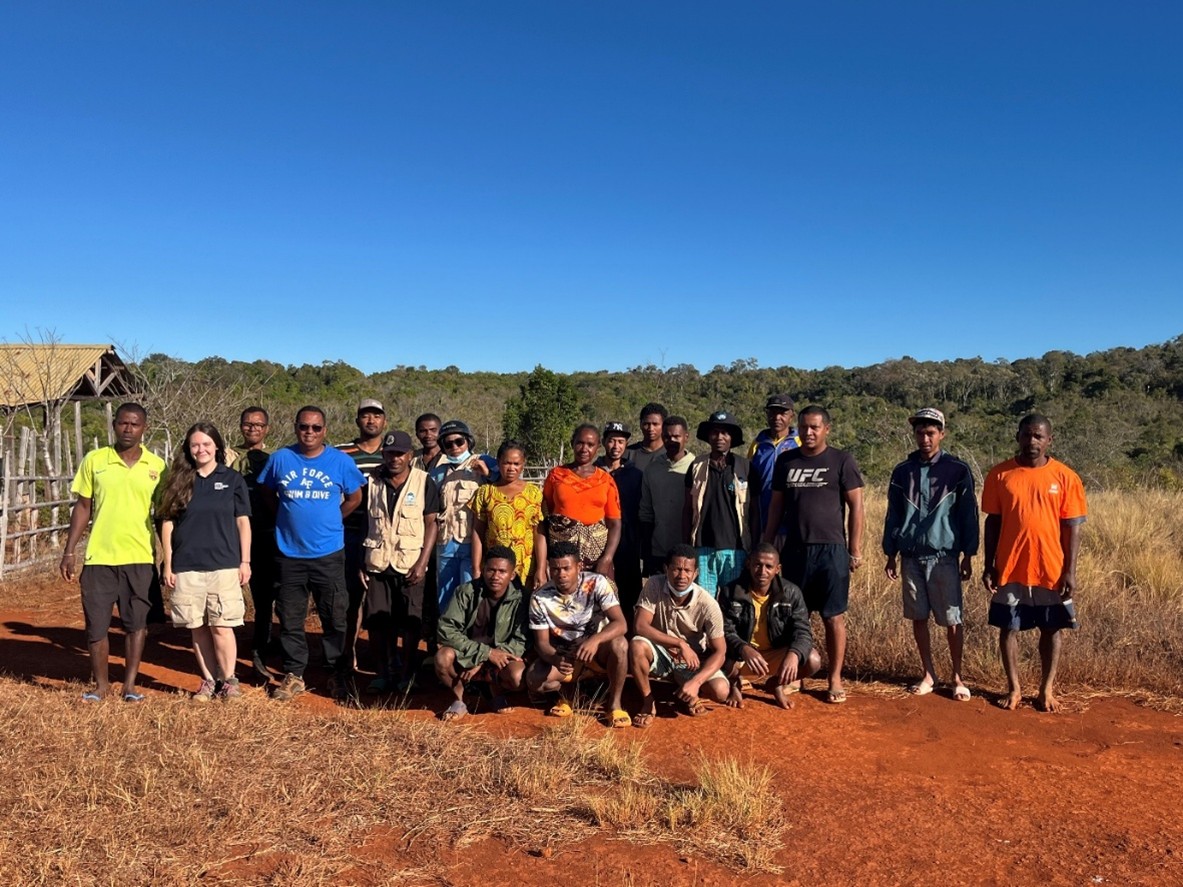 This trip was also new in another way - it was the first time I brought my master’s students from the University of the West of England (UWE) to the field. The visit helped lay the groundwork for their research and allowed them to settle in ahead of their field seasons, during which they collected data for their course-based research projects.
This trip was also new in another way - it was the first time I brought my master’s students from the University of the West of England (UWE) to the field. The visit helped lay the groundwork for their research and allowed them to settle in ahead of their field seasons, during which they collected data for their course-based research projects.
It’s been a strong year for research outputs in the Madagascar programme, including work by two master’s students from the University of Bristol and three master’s students from UWE. It’s also been particularly encouraging to see the diversity of projects, each focusing on different species, from lemurs, amphibians, invertebrates and bats - while also renewing our social science efforts. One such project explores local community perceptions of using zebu manure from local cattle as a fertiliser, aiming to identify opportunities and barriers to uptake. This is increasingly important as we continue to observe, both during visits and in reports from our teams, local dependence on forest resources in Sahamalaza, particularly from forest conversion for rice cultivation.
To enable this investigation, MSc student Cecil, with the support of his Malagasy student partner, conducted interviews across five local villages. This partnership was hugely beneficial to Cecil, especially in overcoming language barriers.
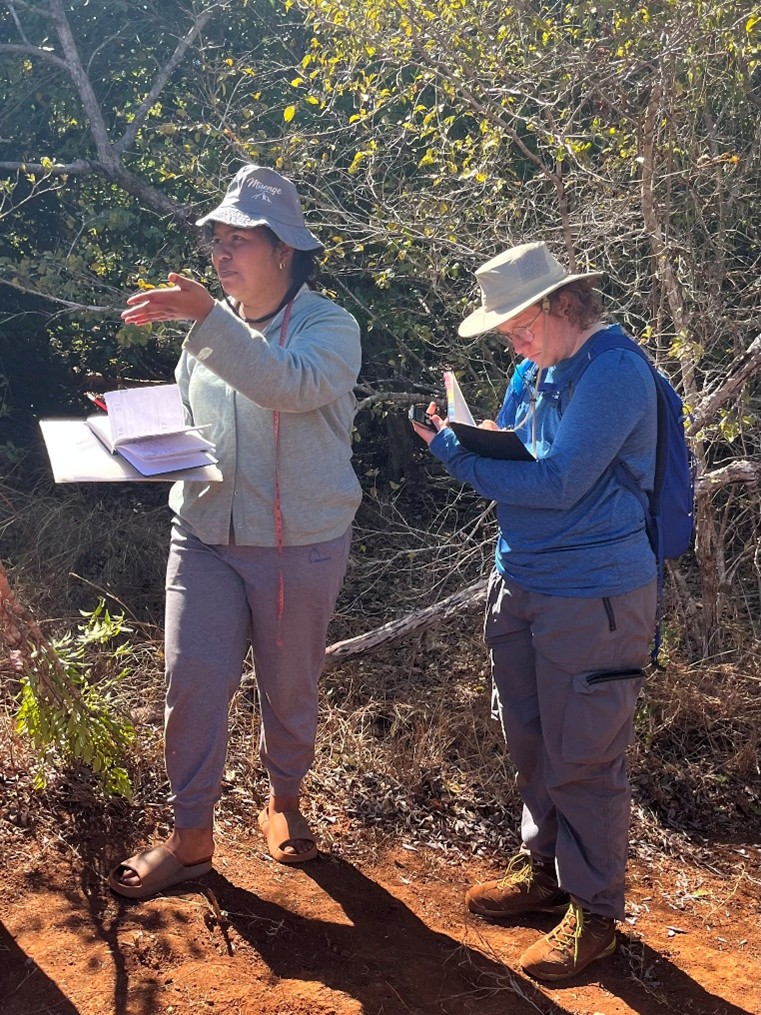 During our stay in the Sahamalaza Iles Radama National Park, the students and I were fortunate to participate in one of AEECL’s community events. Each year, local people walk long distances to help maintain firebreaks in Ankarafa, one of the park’s two remaining core forest areas. These efforts are vital to reducing the spread of fire, which remains a persistent threat to wildlife populations. The event also serves as an important opening to engage with local communities and raise awareness about the work BZS and AEECL do in partnership. For the students and me, it offered a genuine opportunity to understand the challenges and aspirations of local people living around the national park, a topic I speak about almost daily in my role as Conservation Project Manager.
During our stay in the Sahamalaza Iles Radama National Park, the students and I were fortunate to participate in one of AEECL’s community events. Each year, local people walk long distances to help maintain firebreaks in Ankarafa, one of the park’s two remaining core forest areas. These efforts are vital to reducing the spread of fire, which remains a persistent threat to wildlife populations. The event also serves as an important opening to engage with local communities and raise awareness about the work BZS and AEECL do in partnership. For the students and me, it offered a genuine opportunity to understand the challenges and aspirations of local people living around the national park, a topic I speak about almost daily in my role as Conservation Project Manager.
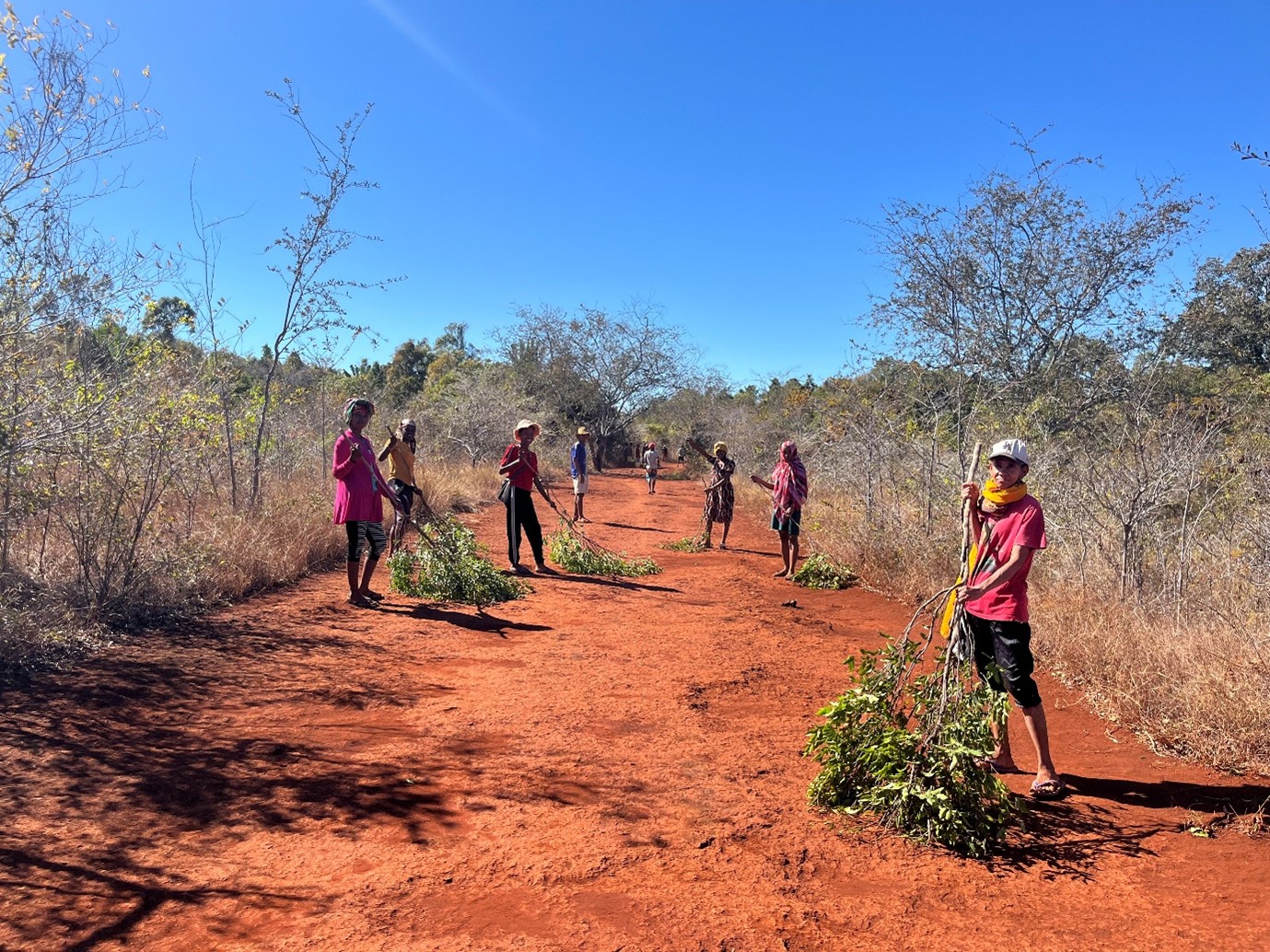 While in Ankarafa, we conducted lemur surveys with AEECL’s biomonitoring guides, led by BZS’s Biomonitoring Lead, Deborah. This training prepared MSc student Sophie to begin her fieldwork investigating ultraviolet (UV) light exposure across lemur habitats, and their behavioural and microhabitat use responses to UV. Her research will provide an important baseline to compare against in future years, especially in the context of anticipated climate change and continued deforestation.
While in Ankarafa, we conducted lemur surveys with AEECL’s biomonitoring guides, led by BZS’s Biomonitoring Lead, Deborah. This training prepared MSc student Sophie to begin her fieldwork investigating ultraviolet (UV) light exposure across lemur habitats, and their behavioural and microhabitat use responses to UV. Her research will provide an important baseline to compare against in future years, especially in the context of anticipated climate change and continued deforestation.
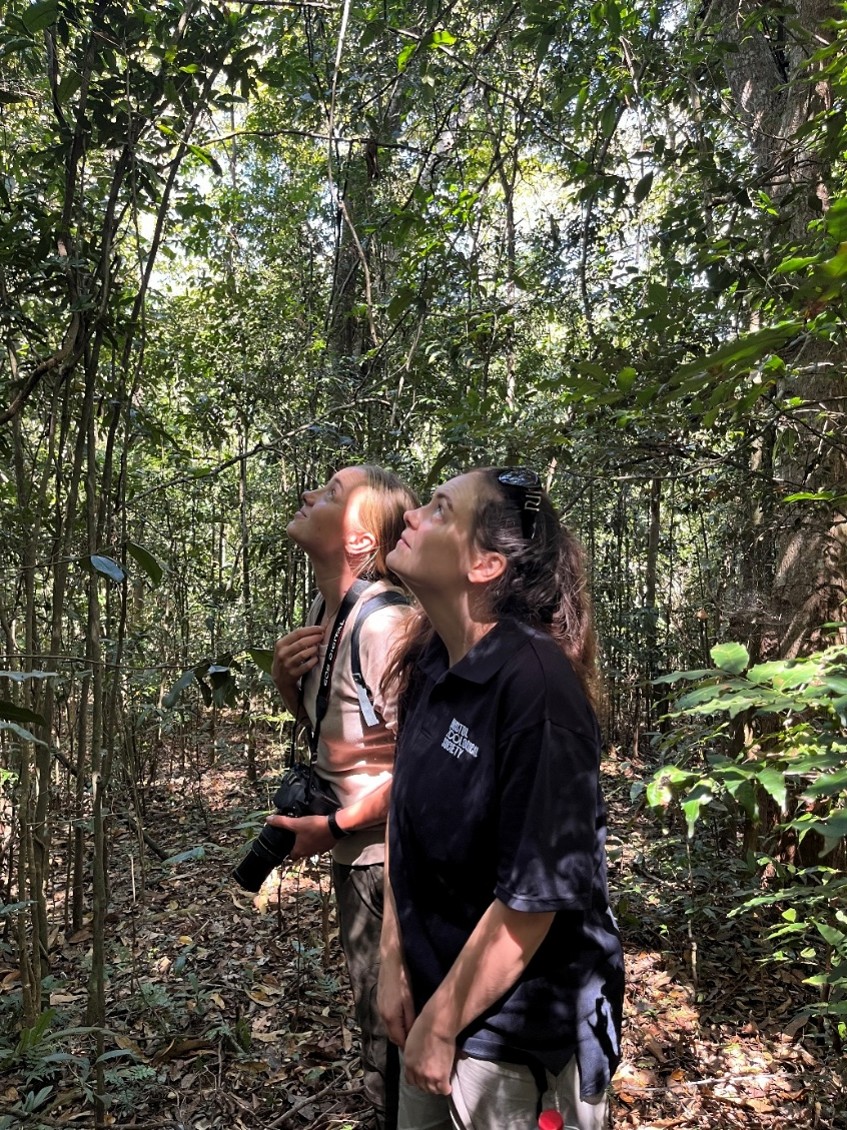 Construction at the Ankarafa Research Station is ongoing, and during my stay, electrical installation was underway. We remain on track to complete the remaining work before the end of the year, with an official launch planned for early 2026! We hope the station will be used collaboratively by our teams and visiting researchers to strengthen efforts to protect Sahamalaza’s forests and all who live within them.
Construction at the Ankarafa Research Station is ongoing, and during my stay, electrical installation was underway. We remain on track to complete the remaining work before the end of the year, with an official launch planned for early 2026! We hope the station will be used collaboratively by our teams and visiting researchers to strengthen efforts to protect Sahamalaza’s forests and all who live within them.
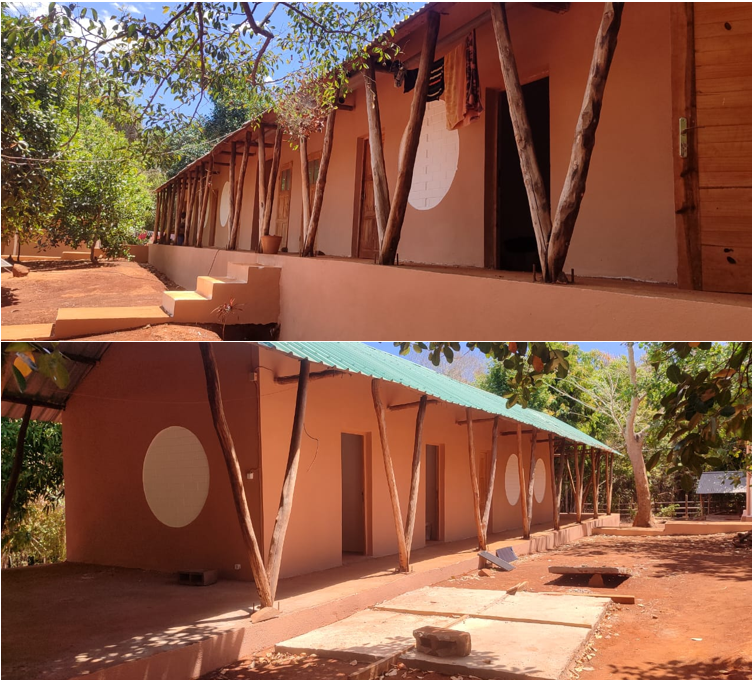 Next, we braved the long and bumpy roads to Androy, the closest village to the second core forest, Anabohazo. I had been anticipating this hike since my last visit, and I’m pleased to report that it took only half the time this year! It was quite a different experience navigating the terrain during the dry season compared to the wet and helped develop my understanding of the seasonal challenges our teams always valiantly overcome while working in Sahamalaza.
Next, we braved the long and bumpy roads to Androy, the closest village to the second core forest, Anabohazo. I had been anticipating this hike since my last visit, and I’m pleased to report that it took only half the time this year! It was quite a different experience navigating the terrain during the dry season compared to the wet and helped develop my understanding of the seasonal challenges our teams always valiantly overcome while working in Sahamalaza.
Lead by BZS’s biomonitoring guides, we conducted an amphibian survey, and despite previous reports of no water bodies in the area at this time of year, in one evening we found at least one area with water. I was incredibly pleased to see at least seven amphibians, eight including the Ankarafa Skeleton Frog spotted in Ankarafa, which raises new research questions about their activity and habitat use. I was also fortunate to spot the Sambirano Mouse Lemur, a first for me, which was a special moment given my history of working with captive mouse lemurs at BZS before joining the Madagascar Programme.
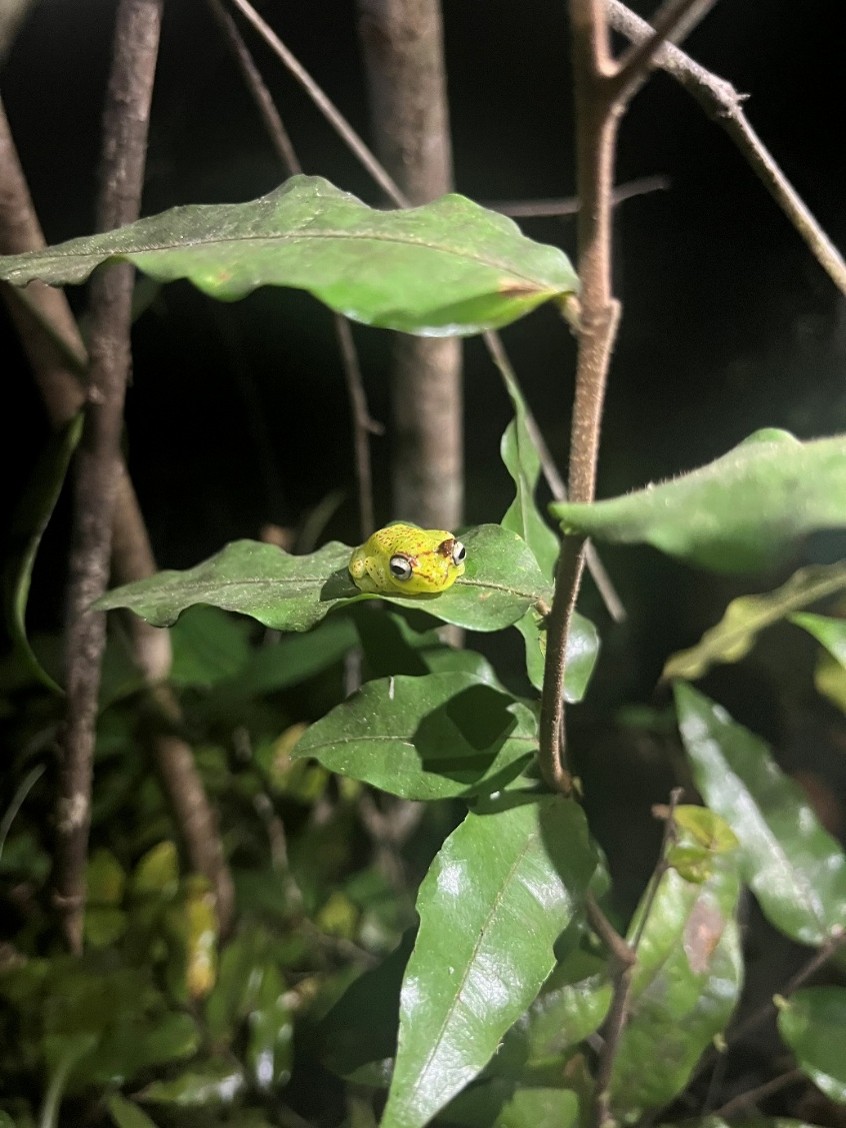 For my final site visit, Fali, our Reforestation Lead, and the wider Reforestation Team showed me BZS’s annual planting efforts from this March. It was moving to see the planted corridor between forest fragments, which one day will allow lemurs to move freely between these areas as they did in the past. The team shared how the planting at this site played a significant role in local stakeholders’ decision-making to reject proposed nearby mining activity. This is a powerful reminder that the continuity of this programme has impacts far beyond the number of hectares we reforest, and that our consistent presence and the livelihoods we support are helping communities choose more sustainable futures.
For my final site visit, Fali, our Reforestation Lead, and the wider Reforestation Team showed me BZS’s annual planting efforts from this March. It was moving to see the planted corridor between forest fragments, which one day will allow lemurs to move freely between these areas as they did in the past. The team shared how the planting at this site played a significant role in local stakeholders’ decision-making to reject proposed nearby mining activity. This is a powerful reminder that the continuity of this programme has impacts far beyond the number of hectares we reforest, and that our consistent presence and the livelihoods we support are helping communities choose more sustainable futures.
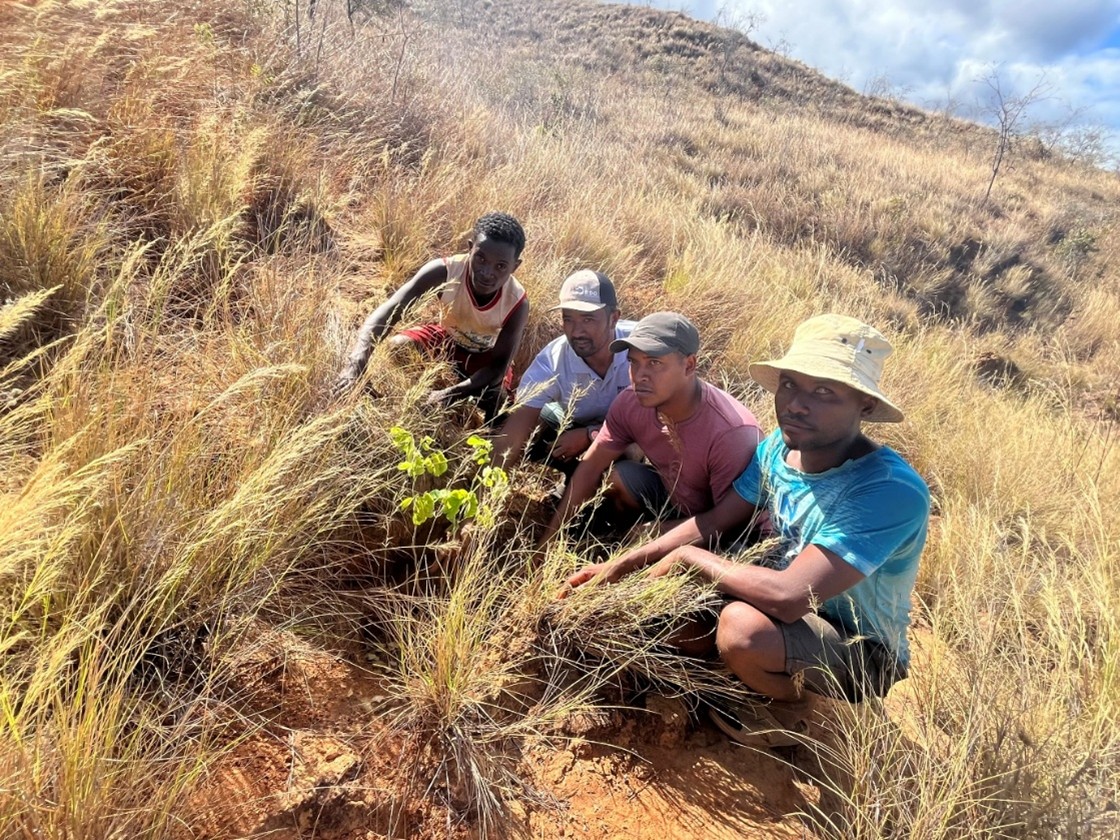 Find out more about our conservation projects in Madagascar below.
Find out more about our conservation projects in Madagascar below.

Want to help us save wildlife?
Become a member today for a year of wild adventure, and help protect the animals and habitats you love by supporting our conservation charity.

